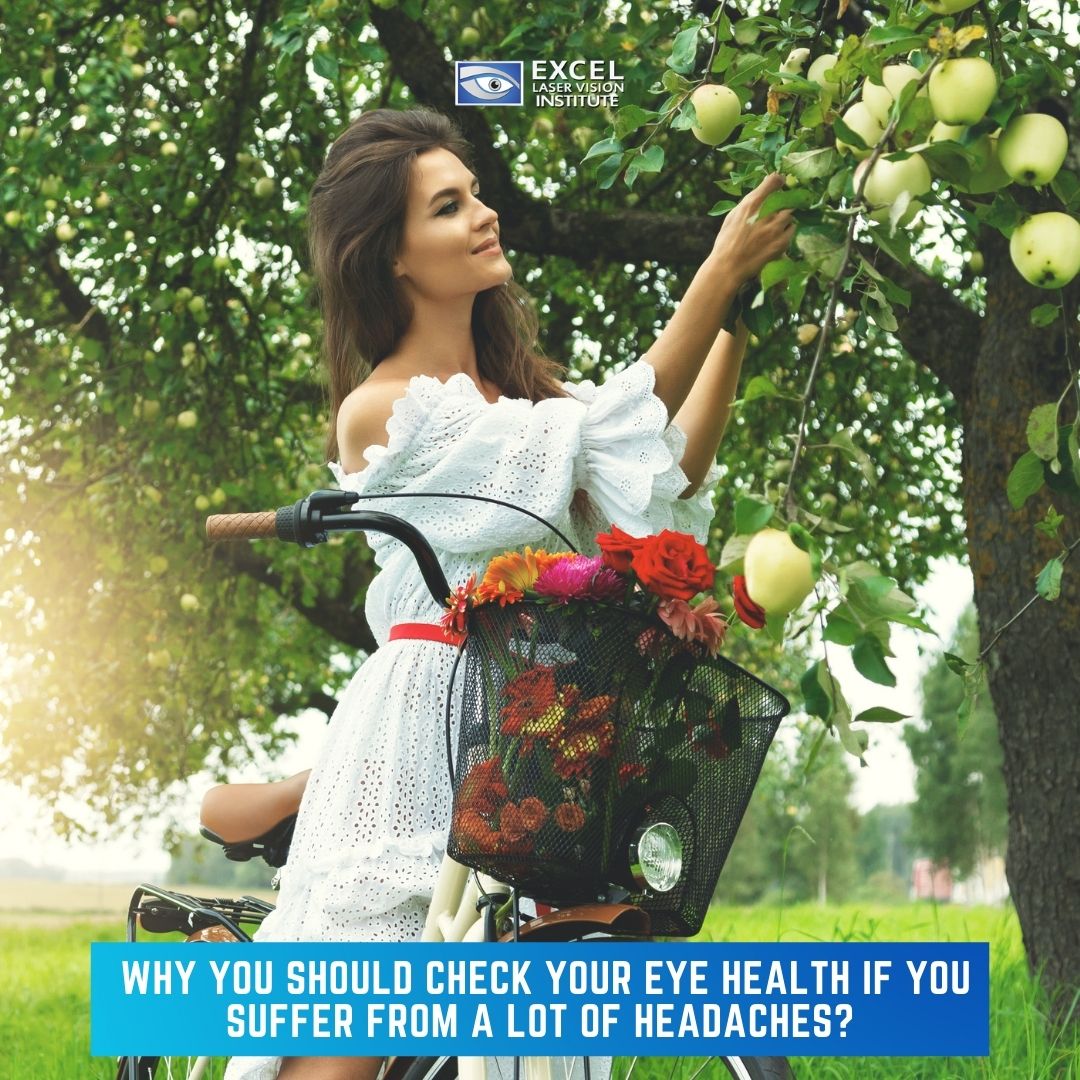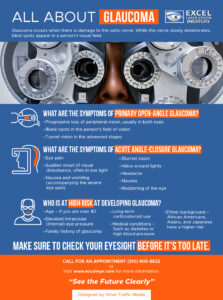
Why You Should Check Your Eye Health If You Suffer From a Lot of Headaches
Headaches are a common pain that many people experience from time to time. However, having pain behind your eyes can wreak havoc in your life especially when you got a lot of things to do. If you often have a headache or even every day, that regularity may mean there is something more serious lurking.
If you have a lot of headaches, book an eye exam right away, and you should see if you can rule out any vision problems as a cause. Headaches are not always linked to vision issues, and every vision problem does not cause headaches, but there is a considerable connection between the two.
If your headaches have caused you to change your routine, you should make your doctor aware of this. He or she will consider your situation and prescribe a treatment based on what could be triggering your headaches, symptoms, and pain location.
What Is A Headache Behind The Eyes?
It is not uncommon for people to complain about headaches behind the eyes, and they may arise from underlying health problems ranging from eye strain to migraine.
When you have pain behind the eyes, it can affect one or both sides and may happen with light sensitivity and other kinds of discomfort. A doctor can recognize the cause of a headache behind the eyes and suggest the most suitable form of treatment.
Here is some more information about what causes headaches behind the eyes and how to treat them.
Migraine
About 16% of adults in the United States suffer from a common condition known as migraines.
A migraine headache can bring about extreme pain on one side of the head, sometimes behind one eye. This pain can last around 72 hours.
Besides a migraine headache, a person may experience:
weakness
dizziness
nausea and vomiting
sensitivity to light and sound
mood changes
visual disturbances, known as aura
What Causes Migraines?
Doctors are not sure what causes migraines. Nevertheless, modifications to nerve signaling and blood vessels in the eye may be involved in its development.
Exterior triggers are usually the catalyst for migraine attacks. Typical migraine triggers include:
hormonal changes
lack of sleep
dehydration
environmental factors, such as smoke, strong smells, or flickering lights
consuming too much caffeine or alcohol
strong emotions, such as stress or anxiety
Eye Strain
Technology has brought a new type of eye issue known as computer eye strain, also referred to as digital eye strain and even computer vision syndrome. It’s an umbrella term that consists of several vision-related conditions. People sometimes experience discomfort in their eyes because they focus on electronic screens for long periods.
Apart from discomfort in one or both eyes, a person that spends immense, undisrupted periods looking at screens or digital devices may experience any of the following symptoms:
headaches
dry eyes
neck and shoulder pain
blurry vision
An individual may only feel discomfort behind their eyes after staring at digital screens for long periods, and symptoms may improve when they stop doing so. Nonetheless, the prevalence of these computer-related symptoms is increasing quickly, and if a person keeps experiencing symptoms, they may need medical assistance.
What Causes Eye Strain?
Concentrating and reconcentrating on a screen for a long time can cause eye strain, resulting in vision issues.
A person will usually experience eye strain after concentrating on a single object or task for a long time. Also, dimly lit areas and exhaustion can cause eye strain.
Sinusitis
Sinusitis occurs when there is inflammation or congestion of the sinuses, and this can produce pressure, causing pain behind the eyes. Susceptible to the location of the inflammation, sinusitis may cause pain behind both or either eye.
Additionally, sinusitis can cause pain and pressure in other parts of the face, for instance, the cheeks and forehead.
Other common symptoms of sinusitis include:
fatigue
nasal congestion
aching in the upper teeth
pain that worsens when the person is lying down
Sinusitis is a common condition, and pain will usually clear up when the overall congestion does. This will often take two to three weeks.
What Causes Sinusitis?
Commonly, sinusitis occurs when allergies or a virus get trapped within the sinuses due to congestion, which can result from face pressure and headaches. Plus, sinusitis may have bacterial or fungal causes, even though these are often linked to immune deficiencies, such as HIV.
Also, nasal polyps and dental surgery can result in sinus pain and pressure.
Cluster Headaches
When a person has one to eight brief, but painful headaches over a day, they probably had a cluster headache.
These headaches are painful and happen on one side of the head. This may be a reaction from sharp or dull throbbing pain behind only one eye.
Frequently, additional symptoms develop on the same side as the headache.
These symptoms can include:
a stuffy or runny nostril
flushing
sweating
The time at which a person experiences cluster headaches is different for every one. However, it is not unusual for people to experience them at night.
What Causes Cluster Headaches?
Medical professionals do not know what causes cluster headaches, and there has not been a lot of research about them, even though these headaches are not uncommon.
Typically, researchers believe that more males usually experience cluster headaches than females. Also, there may be a genetic component, and some people probably have a higher risk than others.
Tension Headaches
Most of the time, people experience tension headaches, which are more common in females than males.
A few people experience tension headaches one to two times per month while others experience them more frequently. If this goes on for three months or longer, doctors consider these headaches chronic.
Typically, tension headaches cause pain behind both eyes and a sensation of pressure around the forehead. They can happen at any time and can last from 30 minutes to several hours. In severe situations, a person may experience symptoms of a tension headache for several days.
Plus, a tension headache can cause sensitivity in the scalp. Tension headache pain may be dull, happen in the forehead, and go along the neck.
What Causes Tension Headaches?
Tension headaches develop for a variety of reasons, including:
stress
lack of sleep
staring at a screen for a long time
driving long distances
muscle contractions in the neck or head
What Are Good Treatments For Headaches Behind The Eyes?
You can get over-the-counter pain medication to alleviate mild or moderate headaches, but prescription medication may be needed when the pain is severe.
A doctor may prescribe antiseizure medications, antidepressants, or oral birth control pills as preventive measures for people who experience frequent migraine headaches. An individual can get relief from a migraine episode by resting in a darkened room. Also, putting a cool, damp towel over the eyes may help too.
Muscle relaxants are a short-term alternative for the management of tension headaches.
If a person has headaches caused by bacterial sinusitis, a doctor will probably prescribe antibiotics. However, nasal decongestant sprays are a good option if an allergy or viral infection brings about sinusitis.
Try to schedule time for a regular eye exam whenever you can, especially if you’ve been suffering from frequent headaches and don’t know what is causing them.

Understanding Glaucoma: Causes, Symptoms, and Dietary Considerations
On average, the eye doctors tell us that about three million Americans have glaucoma, however, only half of them know it.
Unfortunately, glaucoma is an eye disease that eye doctors at the best laser eye surgery orange county don’t take lightly because it’s the second leading cause of vision loss and blindness in the world. The two most common forms of glaucoma that patients have are Primary Open-Angle Glaucoma and Acute Angle-Closure Glaucoma.
What Causes Glaucoma?
Glaucoma occurs when there is damage to the optic nerve. While this nerve slowly deteriorates, blind spots appear in a person’s visual field. The medical community still doesn’t understand why the optic nerve becomes damaged, but it could be related to increased pressure in the eye.
Elevated eye pressure usually comes about because of the accumulation of fluid, known as aqueous humor, that moves throughout the inside of the eye. This internal fluid usually drains out by way of a tissue called the trabecular meshwork at the angle where the iris and cornea come together. When too much fluid is produced or the drainage system doesn’t work correctly, the fluid can’t move at its normal pace, and eye pressure increases.
Typically, glaucoma runs in families. Also, scientists have been able to find genes in some people that are related to high eye pressure and optic nerve damage.
What Are The Symptoms of Primary Open-Angle Glaucoma?
The eye doctors usually call open-angle glaucoma “the silent thief of sight” since it has no symptoms until permanent vision loss has happened. Symptoms in advanced stages of the disease consist of the following::
-
Progressive loss of peripheral vision, usually in both eyes
-
Blank spots in the person’s field of vision
-
Tunnel vision in the advanced stages
Regular eye exams are critical to detect this type of glaucoma early enough to successfully treat the condition and prevent further loss.
What Are The Symptoms Of Acute Angle-Closure Glaucoma?
An angle-closure glaucoma is an uncommon form of glaucoma, which develops very rapidly and requires immediate medical attention.
It’s the complete opposite of open-angle glaucoma since the symptoms of acute angle-closure glaucoma are very noticeable and damage happens quickly. If you experience any of these symptoms, seek immediate care:
-
Eye pain
-
Sudden onset of visual disturbance, often in low light
-
Nausea and vomiting (accompanying the severe eye pain)
-
Blurred vision
-
Halos around lights
-
Headache
-
Nausea
-
Reddening of the eye
Who Is At High Risk At Developing Glaucoma?
On account of the fact that chronic forms of glaucoma can harm a person’s vision before any signs or symptoms are noticeable, take a look at this list of higher risk factors:
-
Age – If you are over 40
-
Elevated intraocular (internal) eye pressure
-
Family history of glaucoma
-
Ethnic background – African Americans, Asians, and Japanese have a higher risk
-
Long-term corticosteroid use
-
Medical conditions – Such as diabetes or high blood pressure
7 Foods to Avoid When You Have Glaucoma
While various factors contribute to the development and progression of glaucoma, including genetics and increased intraocular pressure, certain dietary choices may impact the condition. While there is no specific glaucoma diet, some foods and lifestyle habits are generally advised for those with glaucoma. Here are foods that individuals with glaucoma may consider avoiding or limiting:
High-Sodium Foods
Excessive salt intake can eventually lead to increased blood pressure, which, in turn, may contribute to elevated intraocular pressure (IOP). Individuals with glaucoma are often advised to limit their sodium intake to help sufficiently manage their condition. Processed foods, canned soups, and salty snacks should be consumed in moderation.
Caffeine
Some studies suggest that caffeine may temporarily increase intraocular pressure. While the evidence is inconclusive, individuals with glaucoma may choose to monitor their caffeine intake. This includes coffee, tea, energy drinks, and certain caffeine medications.
High-Sugar Foods
Diets high in sugar have long been associated with various health issues, including diabetes. Individuals with diabetes have a considerably increased risk of developing certain types of glaucoma. Therefore, managing sugar intake is essential for overall health and potentially for glaucoma management.
Fried and Fatty Foods
High-fat diets may contribute to obesity and other health problems, indirectly affecting eye health. Fried and fatty foods, particularly those high in trans fats and saturated fats, must be limited. Instead, individuals are encouraged to include healthy fats like omega-3 fatty acids typically found in fish, flaxseeds, and walnuts.
Processed Foods
Processed foods often are packed with unhealthy additives, preservatives, and trans fats. These can contribute to inflammation and other various health issues that may indirectly impact eye health. Opting for fresh, whole foods is generally a better choice.
Alcohol
Excessive alcohol consumption can be causation for dehydration and may impact the body’s ability to regulate intraocular pressure. Individuals with glaucoma should moderate their alcohol intake and stay well-hydrated.
High-Glycemic Index Foods
Foods with a high glycemic index can cause rapid spikes and crash in blood sugar levels. Maintaining stable blood sugar levels is crucial for overall health, including eye health. Choosing low-glycemic index foods like whole grains, fruits, and vegetables may be beneficial.
Conclusion
Glaucoma, a group of eye conditions causing optic nerve damage, necessitates attention to dietary choices. While not a substitute for medical care, avoiding or limiting certain foods may aid in managing the condition. High-sodium foods linked to increased blood pressure and caffeine, which might temporarily elevate intraocular pressure, should be moderated. Diets high in sugar pose risks, particularly for those with diabetes, increasing the importance of managing sugar intake. Limiting fried and fatty foods and processed items with unhealthy additives and moderating alcohol consumption contribute to a comprehensive approach.
Additionally, it’s important to note that while dietary choices may play a role in managing overall health and potentially influencing glaucoma, they are not a substitute for medical treatment. Regular eye check-ups, prescribed medications, and lifestyle modifications should be discussed with an ophthalmologist or healthcare professional to craft a comprehensive plan tailored to individual needs. Everyone’s health needs are unique so that specific dietary recommendations may differ from person to person. Always consult a healthcare provider for specialized advice based on individual health conditions and concerns.





